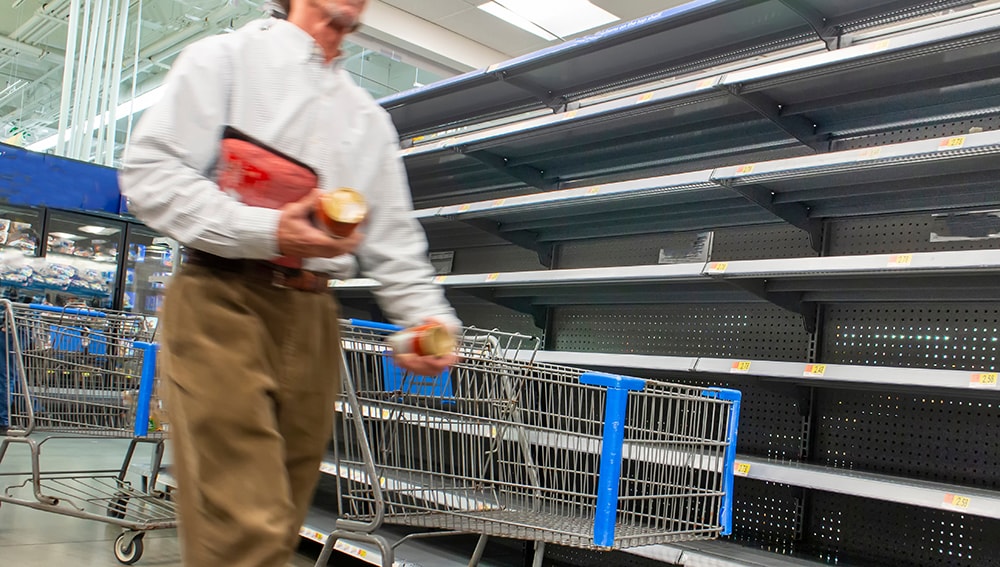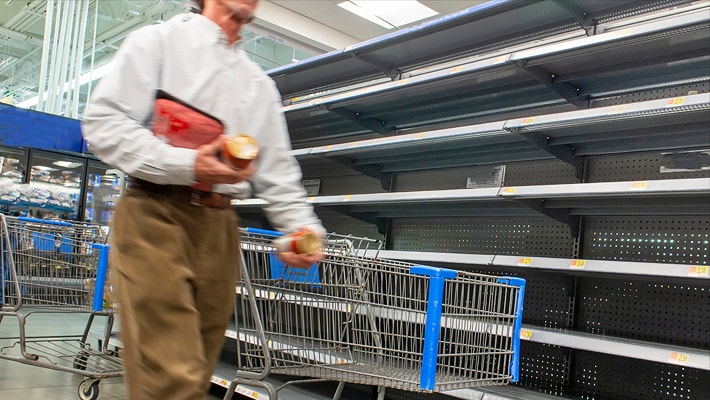
As U.S. shoppers, panicked by COVID-19, have stockpiled food, hand sanitizer, toilet paper, meats and other essentials, retailers are still unable to keep enough merchandise on their shelves.
The coronavirus pandemic has strained supply chains like never before.

“The excessively high demand at the retail level sucked up all the inventory available in the chain and created a vacuum,” said Sebastian Garcia-Dastugue, assistant professor of marketing and logistics at FIU Business. “That remains until the manufacturers fill the order and it starts moving to stores. In this case, they were adding products too slowly.”
In most cases, it’s not a matter of product shortages, rather a consumer demand issue.
“In the last few weeks what we’ve seen is panic buying,” said Garcia-Dastugue, who teaches global logistics and supply chain management. “Nothing in the grocery supply chain is designed to make products flow at the velocity customers are picking stuff off the shelves.”
The coronavirus pandemic, he noted, has two unique elements. It’s a crisis that extends globally and it doesn’t allow manufacturers or distributors to redirect resources to areas that need more assistance.
In the case of a hurricane or a flood affecting Florida, which has a regional impact, companies can scale back distribution of products in other areas and increase it in the affected zones. “Now you cannot do that because everyone in the world is going through the same situation,” said Garcia-Dastugue.
The grocery supply chain has also been hard hit by consumers doing more cooking at home due to restaurant closures and visiting supermarkets less, due to shelter-in-place orders.
Garcia-Dastugue explained that in a supply chain, every component is in balance. Stores’ demand is based on consumers’ level of consumption. On the supply side, manufacturers deliver an established number of products to each retailer. If demand changes, it affects the whole process and creates spikes at different points making it impossible for some parts of the chain to respond.
“In the case of the first weekend that affected South Florida, customers bought all the merchandise and the grocery stores had to replace double or triple the number of products,” said Garcia-Dastugue. “Thousands of stores were in the same shape.”
No system is prepared to handle such a sudden increase in demand and that, he added, resulted in a bottleneck at the manufacturing level:
- consumers freaked out and disrupted retailers
- supply chains responded with the products that were in the pipeline
- manufacturers have to make more products, but can’t do it fast enough
Where’s the toilet paper? As the coronavirus pandemic spread, customers afraid of product shortages purchased in mass quantities, clearing out shelves and sometimes fighting over the paper.
Garcia-Dastugue pointed out that while some retail chains had toilet paper in their warehouses and were able to replenish it quickly, in other cases manufacturer had to re-orient production, expand their distribution regions, fill more trucks and get them on the road.
“Everyone wanted toilet paper at the same time,” he added. “Retail customers across the U.S. were ordering from the same manufacturers. All retail customers were competing for the same manufacturing capacity.”
The focus now is on the food supply chain. An increasing number of meat processing and packaging plants that have temporarily shut down due to COVID-19 outbreaks among their workers has heightened concern about food shortages. Experts and industry insiders say meat will not completely disappear from supermarkets—but what consumers will see is less selection and slightly higher prices.
Overall, the coronavirus pandemic has shed light on what happens to a marketplace when high demand meets limited supply. Although supply is expected to eventually meet demand, Garcia-Dastugue remains concerned about getting all parts of the supply chain working at the same rhythm again.





